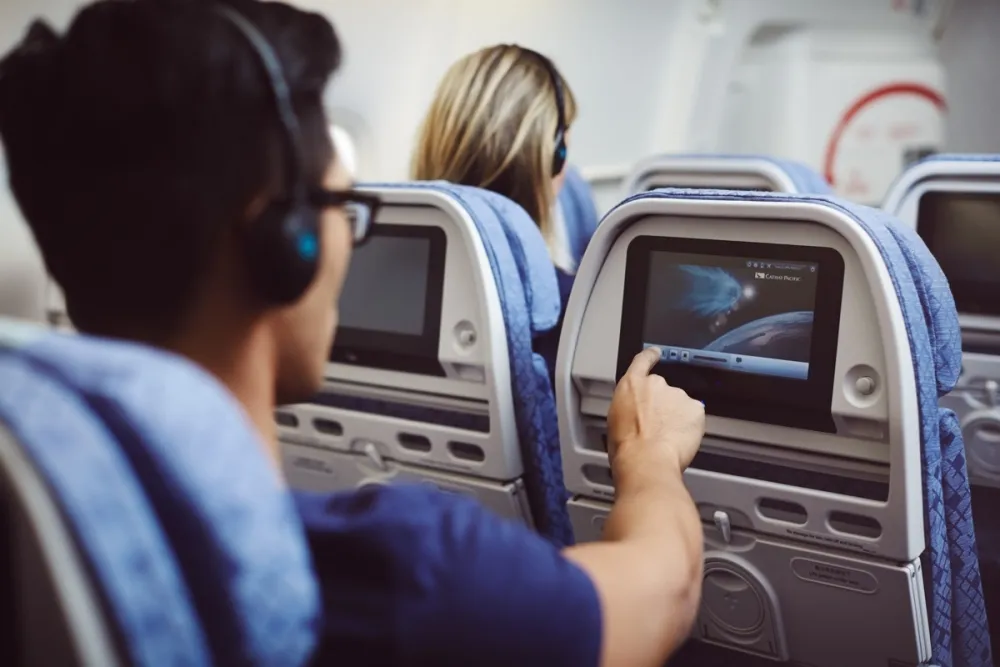
Cathay signals move to 10-abreast Boeing 777s
Oct 02, 2016

Cathay Pacific has announced a shift to a 10-abreast seating configuration in its Boeing 777 aircraft, a move aimed at enhancing passenger capacity and operational efficiency. This decision aligns with industry trends as airlines seek to maximize revenue while maintaining competitive pricing. While the new layout may provide more seats, it has raised concerns among travelers regarding comfort and space, particularly on long-haul flights. The airline is expected to invest in improving other aspects of the passenger experience, such as in-flight services and amenities, to balance the trade-off between capacity and passenger comfort.
The recent announcement from Cathay Pacific regarding their Boeing 777 configuration has stirred considerable interest in the aviation industry. As one of Asia's leading airlines, Cathay Pacific has opted to move to a 10-abreast seating layout in their Boeing 777 aircraft, a decision that reflects broader trends in airline economics and passenger preferences. This move is expected to enhance the airline's operational efficiency while still catering to passenger comfort.
Understanding the 10-Abreast Seating Layout
The 10-abreast configuration means that there will be ten seats per row in the economy class of the Boeing 777. This decision is significant as it allows airlines to increase their capacity without adding additional flights. Here’s a quick comparison:
| Seating Configuration | Seats per Row | Passenger Capacity |
|---|---|---|
| 9-Abreast | 9 | approximately 280-300 |
| 10-Abreast | 10 | approximately 300-350 |
This transition will not only help in accommodating more passengers but also in maximizing revenue per flight. However, it is essential to address how this change might impact passenger experience.
Impact on Passenger Experience
While the increase in seating capacity is a strategic move, it raises questions about passenger comfort. Cathay Pacific emphasizes that the airline is committed to maintaining a high standard of service. Here are some aspects to consider:
- Seat Width: With 10 seats per row, the width of each seat may be slightly reduced. However, Cathay Pacific is keen on ensuring that the seats remain comfortable.
- Legroom: The airline may adjust the pitch of the seats to offer adequate legroom, which is a critical factor for long-haul flights.
- Service Quality: With more passengers onboard, the cabin crew will need to ensure that service levels remain high, which is a hallmark of Cathay Pacific’s reputation.
Economic Considerations for Airlines
The decision to shift to a 10-abreast layout is not merely about comfort; it is also a tactical economic strategy. Airlines are continually looking for ways to optimize their operations and increase profitability. Here are some key economic considerations:
| Factor | Impact |
|---|---|
| Increased Capacity | More passengers can lead to higher revenue. |
| Operational Efficiency | Fewer flights needed to meet demand. |
| Cost per Seat | Lower operational costs per passenger. |
In a competitive aviation market, maximizing revenue while simultaneously managing operational costs is crucial. This shift allows Cathay Pacific to remain competitive against other carriers that have also adopted similar configurations.
Industry Trends Towards Higher Density Configurations
Cathay Pacific is not alone in this move. Many airlines have adopted higher density configurations in response to changing economic conditions and passenger demand. The trend towards 10-abreast seating is part of a broader shift in the industry:
- Market Demand: With an increase in air travel demand, airlines are compelled to find ways to accommodate more passengers.
- Cost Efficiency: Airlines are focusing on maximizing their fleets’ profitability through higher density seating configurations.
- Competitive Edge: As more airlines shift to 10-abreast layouts, others may feel pressured to follow suit to remain competitive.
Conclusion: A Strategic Move for Cathay Pacific
Cathay Pacific's transition to a 10-abreast seating configuration in their Boeing 777s represents a strategic alignment with global aviation trends aimed at improving economic viability while still focusing on passenger comfort. While there may be initial concerns regarding space and comfort, the airline's commitment to service quality remains strong. As the industry evolves, it will be interesting to see how passengers respond to these changes and how they affect overall travel experiences.
In conclusion, this decision underscores the importance of adapting to market demands while striving to provide quality service. Cathay Pacific is clearly positioning itself to meet future challenges head-on, ensuring that it remains a favorite choice among travelers in the competitive landscape of international aviation.
Related Articles

Explore Thailand: The Best Islands to Visit for Paradise, Adventure, and Relaxation

The Ultimate Guide to the Best Islands in Thailand for Your Next Getaway

Do babies need passports? How to get a passport for a newborn

How to get a U.S. passport fast: here’s how to expedite the process

What is Mobile Passport Control: 5 reasons why you should use it

SENTRI vs. Global Entry: A detailed guide

Do you need a passport to go to the Bahamas? Let’s find out

Do you need a passport to go to Mexico? A detailed guide

Do you need a passport to go to Canada? We got the answer

Do You Need a Passport for a Cruise: An Essential Travel Guide

Booster Seat Requirements: All the Rules to Follow in Your Rental Car

What Are the World’s Most Powerful Passports, and How Does Yours Rank?

How to Take a Passport Photo at Home: A Helpful Guide

You've got to have heart! Southwest's new livery

Your opinion: Should water be free on low cost carriers?

Young women bolder than guys as solo travellers
